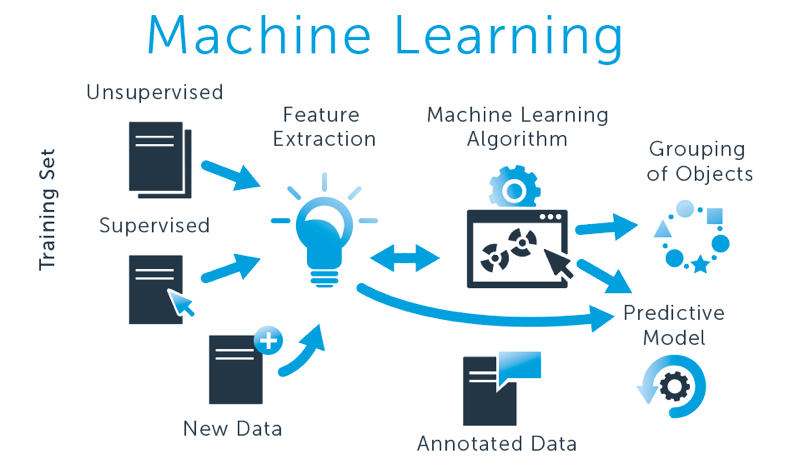Artificial intelligence
“Artificial intelligence isn’t going to yank the carpet from under strategist feet; if anything, it will help them grow into a more efficient version of themselves.”
Artificial intelligence and machine learning are already transforming the technological landscape. From digital assistants to image-recognition software to self-driving cars, what was once the stuff of science fiction is now becoming a reality.
RealTek’s Artificial Intelligence Capabilities
Realtek’s Convergo Automation Platform includes methods, tools, approaches and resources that focus on improving the consistency, efficiency and time to make decisions and take action. In addition, we wrap this portfolio with highly-skilled consultants who know how to apply relevant domain knowledge to leverage these capabilities and continue to innovate on emerging technologies.
Artificial Intelligence
Artificial intelligence (AI) is termed for a machine’s ability to imitate a human’s way of sensing things, make decisions and communicate.
Example of artificial intelligence is Google’s Duplex, which witnessed a revolution in the ability of computers to understand and to generate natural speech, especially with the application of deep neural networks
An artificial intelligence is nowadays fairly adept at understanding natural language, due to which it can identify certain terms used in a real-time phone conversation. AI NLP (Soft AI) use them to make inferences as to what the conversation is about. This is not about frequencies alone. Instead, the artificial intelligence can interpret the terms and their context, thereby forming a deep understanding of the situations, things, and attitudes the words relate to. Applications based on textual analysis and the understanding of natural language are already in use in customer service solutions, insurance companies, and public sector organizations which process vast amounts of digital material, such as emails, online service feedback, chats, and documents.
Robotic Process Automation
Robotic Process Automation (RPA) involves the production of automation with the help of software. Robotic Process Automation differs from artificial intelligence in the sense that software robots must always be provided with instructions.
Robotic Process Automation is ideal for example entering purchase invoices in an ERP system or the establishment of a new customer account in a number of systems simultaneously, and the routines related to the hiring of a new employee and the start of employment relationships. The common denominator in all of these cases is the creation of various user IDs and the importation of the same data into more than one system, meaning that automation reduces mistakes and may generate a lot of savings in terms of work that has formerly been carried out manually.
The creation of automation requires a human to switch on the robot assistant when first taking it into use and provide it with instructions. The rest is taken care of by the robot, autonomously. This ensures that all of the necessary user IDs and access rights are generated at the same time without errors and that the quality remains good as the number of mistakes declines.
RPA can help organizations in many ways, such as:
- Automation of manual data-entry processes for data from different sources
- Automatically sorting and filtering tasks based on priority, then forwarding them for manual processing
- Improvement of systems that lack the functions required
- Integration between different systems
- Standardization of communications and correspondence (emails, messages, etc.)
- Automation of manual data inspection and calculations
Machine learning
AI solutions often make use of the methods of machine learning. A machine can, for instance, be taught to identify phenomena with the help of mathematical and statistical methods. In this case, “teaching” means loading numerous images, numeric values, or text that represent the phenomenon to be learned into an algorithm. As a result of this teaching, the algorithm is gradually able to become increasingly better at identifying a particular phenomenon.
In the future, robotic process automation and forms of machine intelligence will become increasingly amalgamated. Different technologies can be used side by side to perform the same task because of their ability to complement one another.
This kind of joint operation is nicely illustrated by a customer service situation in which the customer first communicates with an AI customer service representative through a chat function or by talking. During the process, the customer is given recommendations and suggestions on products with the help of machine learning algorithms. Finally, a software robot handles the customer’s order automatically and sends an order confirmation which accounts for the customer’s profile and the service situation in a natural way.
Neural Networks
Artificial Neural Networks are an important subset of machine learning. They are what computer scientists use to work on complex tasks, such as making predictions, strategizing and recognizing trends. Unlike other machine learning algorithms, which may organize data or crunch numbers, neural networks learn from experience. Like humans.
Neural networks, as the name suggests, are modeled after the neural networks of the human brain, which are responsible for human decision making. The brain takes in information and then attempts to connect the dots to come up with a conclusion. We don’t always get it right at first, nor do the machine learning algorithms. But through trial and error, we, and likewise the artificial neural networks (ANN), start coming up with better outputs.
ANNs are used across industries – in medicine, engineering, finance, and others. They are also transforming the available set of marketing technology resources, giving marketers new, more efficient and more dynamic tools for:
- Predicting consumer behavior
- Creating and understanding more sophisticated buyer segments
- Marketing automation
- Content creation
- Sales forecasting
ARTIFICIAL NEURAL NETWORKS OPERATION
Currently, most ANNs are relatively simple when compared to the complex neural interactions that take place when a human mind makes decisions. There is an input layer, an output layer, and a hidden layer inserted in between – where there are hundreds of virtual nodes the algorithm connects and reconnects to when trying to reach an outcome.
To ‘learn’ with each input experience, the algorithm will alter the internal connections until it figures out how to achieve a desired output within a specified level of accuracy. Once the algorithm has learned, more inputs can be entered and the ANN provides a workable prediction.

WHAT ABOUT DEEP LEARNING?
Deep Learning (DL), refers to a more intensive version of machine learning. Remember the single hidden layer in the artificial neural network? With DL, there are multiple layers.
Not only are deep learning neural networks more complex, but it is here that there exists the hope (and the fear) that the algorithms will take off and begin learning on their own. Where the technology is right now, whether it’s basic machine learning, NN or DL, the algorithms are still dependent on the provision of inputs from external sources, i.e. humans.

NEURAL NETWORKS USE CASES
ANNs are used across industries – in medicine, engineering, finance, and others. They are also transforming the available set of marketing technology resources, giving marketers new, more efficient and more dynamic tools for:
- Predicting consumer behavior
- Creating and understanding more sophisticated buyer segments
- Marketing automation
- Content creation
- Sales forecasting
The most widely used application of artificial neural networks is in the field of predictive analytics. In this case, the neural networks can help analytics make predictions about the outcome of a campaign by recognizing the trends from previous marketing campaigns. While neural networks have been around for decades, it is the more recent emergence of Big Data that has made this technology incredibly useful for marketing.
With a virtual sea of data to input into a neural network, it’s now possible to achieve sophisticated, accurate predictions that can help s make smarter decisions about what actions to take and what channels to allocate more resources to. Likewise with market segmentation, sales forecasting and content creation and distribution, the neural networks, fed with enough data, are able to provide more precise insights and predictions, helping marketing decision makers better gauge expectations. This technology is also allowing for a more dynamic level of automation, which isn’t only evolving the marketing workflow but is creating an even more seamless experience for the consumer.






